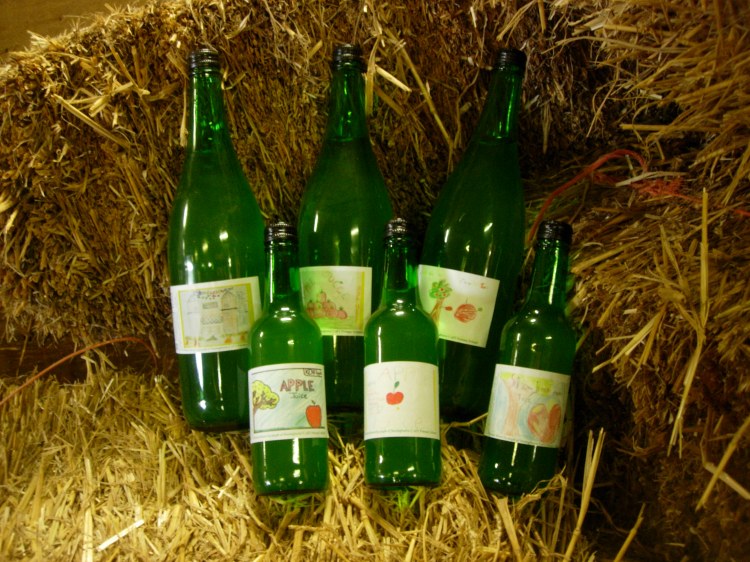Due to its abundance of orchards, Kent is not called “The Garden of England” for nothing, and here at Sissinghurst we look after a small part of that “Garden”. Planted in 2009 and covering 4.8 acres, the orchard is the main fruit growing area of the estate, and its produce is used in the restaurant and sold to the public as fruit, juice and cider.
With over 1,100 trees the amount of work to look after them can be quite considerable. In the early years the trees were fed compost to help them establish and as they continue to grow and mature they are given fertilizer.
As you can imagine, trying to keep 1,100 fruit trees fit and healthy to produce fruit can be problematic. This year we have had, as have many orchards, a bumper crop of fruit. This was due to fine growing conditions that provided a good amount of sunshine with ample rain. The problem we soon encountered was the vast amount of apples growing on relatively small and immature trees. As the fruit swelled, the weight on their limbs meant they hung downwards dramatically and in quite a few cases snapped the branch. If a strong wind blew then this problem only worsened. We spent quite a few hours picking off some of the fruit, even though it wasn’t quite ready, just to lighten the load and prevent the branch from breaking. We supplemented this by tying up the worst of the branches to the tree stake to give much needed support.
When you add in the crows picking at our cherries (we had to cover as many as we could with unused log bags) and some of the crop (again mostly cherries) disappearing into people’s baskets then you understand where I’m coming from!
Maintenance of the orchard included mowing the whole site and strimming between the trees where the tractor could not get to. The excellent growing conditions for fruit also meant excellent growing conditions for weeds and if there is something a young developing tree doesn’t like it is competition for nutrients. As the trees all have guards on at this stage to protect them from rabbits this made it difficult to weed around the base. The only viable alternative was to chemically spray against the weeds using a spray that is perfectly safe to use in an orchard environment.
As the summer rolled on it was obvious our hard work was going to pay off. During September and October we set about picking the fruit off over 600 apple trees. The varieties picked included Red Windsor, Blenheim Orange, Egremont Russet, James Grieve and Herefordshire Russet, just some of the 22 varieties grown.
Picking took some considerable time but in the end we sent multiple bins to Ringden Farm for pressing.
A few weeks later we collected 1,960 ltrs of apple juice in 1ltr and 330ml bottles. When one considers that we only received 275ltrs of juice last year it shows what a fantastic 2015 we had (and we still have 200ltrs of cider to come before Christmas). Waiting for the bottles, we decided to enlist the help of Sissinghurst Primary School in designing some labels. The call for help went out, and we were inundated with colourful patterns and designs to choose from. It sounds like the pupils had great fun, and we enjoyed involving the local community in the project. It was a difficult task to select the winning drawings but we picked those below for their colour and connection to Sissinghurst Castle.
2015 was a very busy year in the orchard but we were delighted with the outcome. As well as the apples we had produce from pears (90 trees), quince/crab apples (130), cherries (133) and plums (63). As I write there are still some pears and crab apples to pick, but everything else has been safely gathered and been bought by visitors or made into tasty meals by the restaurant. So when you’re passing, do stop by and go home with a bottle of our delicious apple juice – I can thoroughly recommend it!
Ranger Paul.






